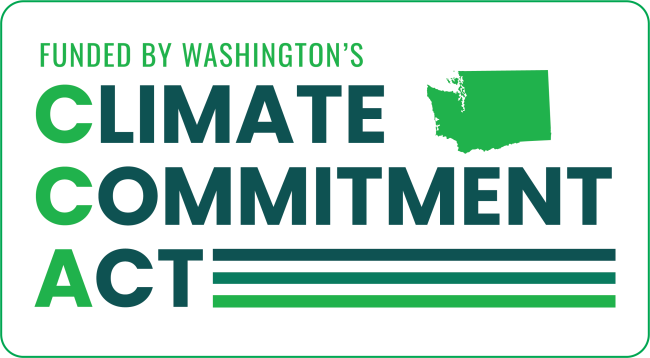Transit Support Grant
This grant provides funding to support operating and capital expenses of transit agencies in Washington state.
The Transit Support grant is supported by state funding from Washington’s Climate Commitment Act (CCA) (100 percent). The CCA supports Washington’s climate action efforts by putting cap-and-invest dollars to work reducing climate pollution, creating jobs, and improving public health. Information about the CCA is available at www.climate.wa.gov.

Grant award amount
The Legislature funded $188,900,000 for the 2025-2027 biennium to support this program.
Match requirements
No match required.
Eligible applicants
Eligible transit agencies include:
- City transit systems under RCW 35.58.2721 or Chapter 35.95A RCW.
- County public transportation authorities under Chapter 36.57 RCW.
- Metropolitan municipal corporation transit systems under Chapter 36.56 RCW.
- Public transportation benefit areas under Chapter 36.57A RCW.
- Unincorporated transportation benefit areas under RCW 36.57.100.
- Any special purpose districts formed to operate a public transportation system.
Eligibility requirements
To be eligible for transit support funds, transit agencies must confirm zero-fare policies are in effect to be eligible for biennial distributions. For grant awards not yet under contract, as a condition of transit support grants, public transportation agencies may not delay, divert, supplant, or suspend the collection of approved local sales and use taxes for the purpose of public transportation during the 2025-2027 fiscal biennium.
To be compliant with the legislative requirements for the Transit Support Grant, all qualified transit agencies must submit, on a biennial basis, a certification form in the “compliance” section of the Grants Management System confirming the agency has:
- Maintained (or increased) its local sales tax authority for transit at or above Jan. 1, 2022 levels.
- Implemented and maintained “zero-fare, low-barrier policy for 18 and under” for all modes provided by the agency, including paratransit, and it is up to date.
- Reported annually the total trips taken as the result of funding from the Transit Support Grant and trips taken by riders 18 years of age and younger on all modes provided by the agency, including paratransit, as part of its annual Summary of Public Transportation reporting.
Additionally, no agency may receive more than 35 percent of the total grant funding available.
Frequently asked questions
Get answers to frequently asked questions (PDF 385KB) about the Transit Support grant program.
Awards
The 2025-2027 Transit Support grants table below shows 31 projects awarded $188.9 million.
| Organization | Award |
|---|---|
| Asotin County PTBA | $248,280 |
| Ben Franklin Transit | $7,109,914 |
| Central Transit | $202,607 |
| Clallam Transit System | $1,755,927 |
| Columbia County Public Transportation | $288,729 |
| Community Transit | $23,280,421 |
| C-Tran | $10,369,480 |
| Everett Transit | $4,092,337 |
| Garfield County Transportation Authority | $56,931 |
| Grant Transit Authority | $863.931 |
| Grays Harbor Transportation Authority | $1,867,619 |
| Intercity Transit | $9,821,140 |
| Island Transit | $2,038,569 |
| Jefferson Transit Authority | $866,481 |
| King County Metro Transit | $66,115,000 |
| Kitsap Transit | $8,079,872 |
| Lewis County Transit | $866,452 |
| Link Transit | $3,631,336 |
| Mason County PTBA | $1,210,471 |
| Pacific Transit System | $468,150 |
| Pierce Transit | $14,885,292 |
| Pullman Transit | $787,103 |
| RiverCities Transit | $879,826 |
| Selah Transit | $47,174 |
| Skagit Transit | $3,280,104 |
| Spokane Transit Authority | $16,240,722 |
| TranGo | $405,159 |
| Union Gap Transit | $151,582 |
| Valley Transit | $902,760 |
| Whatcom Transportation Authority | $6,563,642 |
| Yakima Transit | $1,522,989 |
Sign up for grant updates
To stay informed about WSDOT public transportation grants, you can register in GovDelivery.
Slow down – lives are on the line.
Excessive speed was a top cause of work zone collisions in 2024.
Phone down, eyes up.
Work zones need our undivided attention.
It's in EVERYONE’S best interest.
96% of people hurt in work zones are drivers, their passengers or passing pedestrians, not just our road crews.
